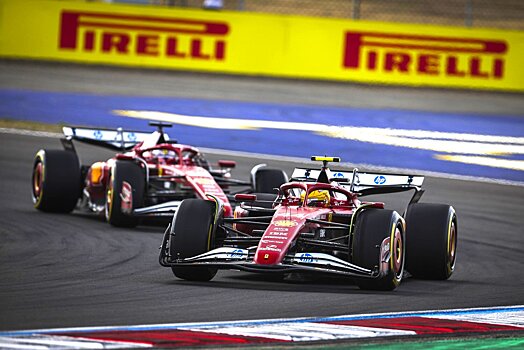SHANGHAI — The Formula 1 season is still in its early stages, with only two races completed, yet Ferrari`s current points situation is already concerning.
After narrowly missing the constructors` championship last year by 15 points, the Italian team now finds itself trailing McLaren by a significant 61 points in the team standings this season. Similarly, their drivers, Lewis Hamilton and Charles Leclerc, are lagging behind title contender Lando Norris by 35 and 36 points, respectively, in the drivers` championship.
These point deficits would appear less severe if Ferrari`s cars hadn`t faced disqualification in Sunday`s Chinese Grand Prix due to separate technical rule violations. Leclerc`s vehicle was found to be underweight by 1 kilogram, while Hamilton`s car was penalized for excessive wear on the plank, attributed to the car being set up to run too low.
Ferrari stated that they had `no intention to gain any advantage` and that the discrepancies would have offered negligible to zero performance benefits. However, in a sport where success is measured in fractions of a second, there is no tolerance for breaching regulations.
Why Hamilton was disqualified
The plank, a resin-wood strip attached to the car`s underside, is used by the FIA to assess ride height and prevent teams from adopting potentially unsafe setups. Lower car setups can improve performance, but they increase plank wear from track surface contact.
Regulations stipulate that if plank thickness reduces below 9mm at any measurement point, the car is non-compliant and faces disqualification.
The rulebook specifies: `The plank assembly`s thickness, measured perpendicularly to its lower surface, must be 10mm [plus or minus] 0.2mm and uniform when new. A minimum thickness of 9mm is permissible due to wear, checked at designated hole peripheries.`
Hamilton`s plank measurements revealed excessive wear: 0.4mm beyond the limit on the left side and 0.5mm in the center and right. For perspective, a standard quarter coin is 1.75mm thick.
The previous instance of cars being disqualified for plank wear occurred at the 2023 U.S. Grand Prix, involving Hamilton, then with Mercedes, and Leclerc of Ferrari.
In that instance, Austin`s bumpy track and the sprint race format, which restricted setup changes post-Friday qualifying, were contributing factors. Shanghai`s newly laid, smooth surface eliminates a similar excuse, and teams now have setup adjustment opportunities between sprint races and the main grand prix, partly to avoid such issues.
Ferrari acknowledged `misjudging the plank`s consumption by a small margin` in a Sunday statement. Stewards confirmed the team admitted `no mitigating circumstances` and recognized it as `a genuine error.`
Why Leclerc was disqualified
Car weight regulations are as strict as plank thickness rules.
The minimum F1 car weight, including the driver but excluding fuel, is 800kg, mandatory throughout competition. This year, it increased by 2kg to accommodate drivers weighing 82kg instead of 80kg, but strict weigh-ins remain post-race.
Following standard procedure, all finishers were weighed with remaining fuel. Leclerc`s Ferrari and Pierre Gasly`s Alpine registered suspiciously low at 800kg, prompting fuel drainage checks, confirming they were below the limit.
Leclerc`s car sustained front wing endplate damage from a lap one collision with Hamilton. Ferrari was allowed to replace it with an identical, undamaged wing for re-weighing, yet car No.16 remained 1kg underweight. Gasly`s car was also 1kg under, leading to both disqualifications.
Both cars were among those completing the race on a one-stop strategy, contrary to the anticipated two-stop approach. Extended tire usage caused greater wear than expected, increasing physical rubber loss. New F1 tire sets (excluding rims) weigh 42kg, potentially losing up to 3kg in wear over long stints.
`Charles` one-stop strategy led to high tire wear, causing the car to be underweight,` Ferrari`s statement explained.
Hamilton, however, used a two-stop strategy, likely having more tire rubber at the finish line than Leclerc. It`s worth noting that nine other cars, including Gasly`s teammate Jack Doohan, successfully executed one-stop strategies without falling below the weight limit.
A recent precedent for this infringement is George Russell`s Mercedes, stripped of victory at last year`s Belgian Grand Prix for being underweight.
Ferrari forfeited 18 points due to the Chinese Grand Prix disqualifications, which would have more than doubled their current 17-point total. This setback, though painful now, could become significantly more so if the 2024 title race with McLaren remains closely contested.

